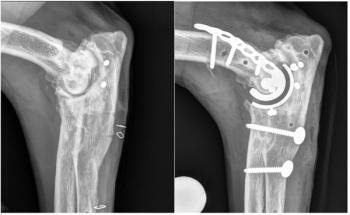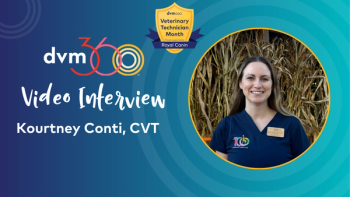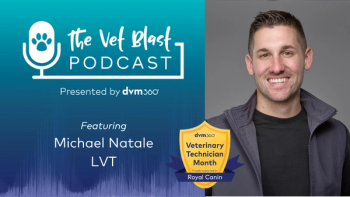
Pain Management in Companion Animals: New Therapies
Panelists B. Duncan X. Lascelles, BVSc, PhD, DACVS; Margaret Gruen, DVM, MVPH, PhD, DACVB; Mark Epstein, DVM, DABVP, CVPP; and Sheilah Robertson, BVMS, PhD, DACVAA, DACAW, review the most promising new therapies for treating pain in companion animals, including monoclonal antibodies.
B. Duncan X. Lascelles, BVSc, PhD, DACVS: Let’s dive straight in and start to talk about some of the exciting developments on the horizon. Margaret, if I can come back to you again to talk to us about, maybe, the biologics?
Margaret Gruen, DVM, MVPH, PhD, DACVB: I can certainly speak to anti-nerve growth factor antibody, which is a biologic that has been in development. Nerve growth factor can act to sensitize nociceptive neurons and contribute to pain. The anti-nerve growth factor antibodies have shown efficacy for both dogs and cats for the treatment of pain.
B. Duncan X. Lascelles, BVSc, PhD, DACVS: These are species-specific?
Margaret Gruen, DVM, MVPH, PhD, DACVB: Highly species-specific.
B. Duncan X. Lascelles, BVSc, PhD, DACVS: They have to be developed for that particular species?
Margaret Gruen, DVM, MVPH, PhD, DACVB: Yes, they have to be developed for that particular species. So, there’s a canine version and a feline version. They are injected and deliver 4 to 6 weeks of pain control.
B. Duncan X. Lascelles, BVSc, PhD, DACVS: That, to me, sounds quite exciting.
Margaret Gruen, DVM, MVPH, PhD, DACVB: Yes, certainly for cats.
B. Duncan X. Lascelles, BVSc, PhD, DACVS: For cats, in particular—yes.
Mark Epstein, DVM, DABVP, CVPP: Nerve growth factor upregulates with chronic pain. We know that and that’s why, probably, we will list it as a benefit. But you need nerve growth factor, and I know that some of the human studies were halted a few years ago because of adverse effects of their compounds; they’ve restarted. If you could speak to their concept of using an anti-nerve growth factor monoclonal antibody, for years, what would be the potential clinical implication of that? Not just a month or 2, but for a long, long time.
Margaret Gruen, DVM, MVPH, PhD, DACVB: I think that we don’t know, honestly, yet. The human trials were very long-term, and the ones where the most adverse events were seen, were in combination with long-term nonsteroidal use as well. And so, the restarting of those has been restricted to humans who are not also taking nonsteroidals. And, certainly, in our canine and feline studies, we have insisted that they be off steroids and nonsteroidals throughout the studies.
I think that at some point, there becomes a balance, especially in some of the geriatric patients where we know certainly, when they’re young, they need nerve growth factor. We know that nerve growth factor is active in older age, as well. But, peripherally, it’s very important for this pain sensitization, and this does seem to work. There is, I think, a balanced point—where when you see how effective it can be, the comfort is more important than maybe shortening the life a little bit. We don’t know that that would even happen, but for many, once you see how improved they can be on that, you never, ever want them to go back to feeling the way they did.
Sheilah Robertson, BVMS, PhD, DACVAA, DACAW: I think we should consider the comfort level of owners knowing that these are monoclonal antibodies. You can’t pick up a magazine—it doesn’t matter what magazine, not a veterinary magazine—and not flip through it and see a new ad for a human monoclonal antibody. It might be for lung cancer or psoriasis; it might be for osteoporosis. But clearly, it’s a very fast expanding area in human medicine.
Certainly, for a lot of the animals that we deal with—we’re focusing on osteoarthritis—but most of our animals with OA, especially the geriatrics, have comorbidities. And so, we’re dealing with other diseases and the drug-drug interactions or the effect of the drug on them because they have kidney disease or liver disease. And when you look at these types of drugs, I think the hope is that there’s going to be less of an impact on animals that have comorbidities, because it’s a very targeted treatment for their pain.
B. Duncan X. Lascelles, BVSc, PhD, DACVS: I absolutely agree. I think it’s a very exciting area that’s being developed, and we’re not too far away, hopefully, from having them on the market.
Newsletter
From exam room tips to practice management insights, get trusted veterinary news delivered straight to your inbox—subscribe to dvm360.






